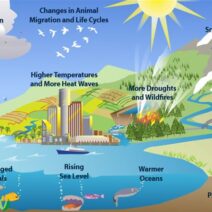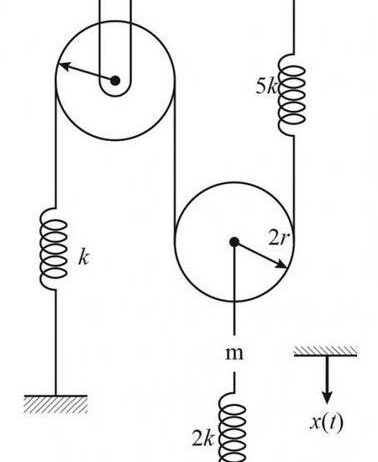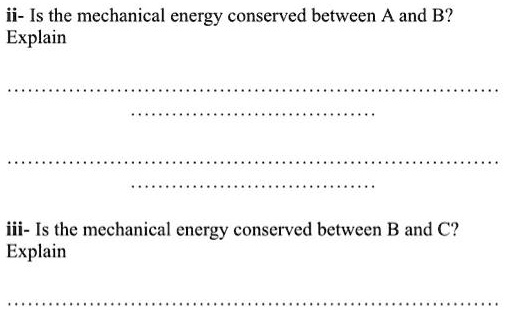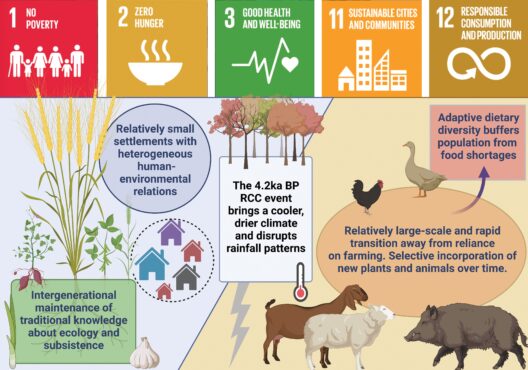In the realm of physics, the concept of mechanical energy conservation serves as a cornerstone in understanding various systems. Consider a spring pulley system: a delicate interplay of forces elegantly orchestrated, similar to a skilled dancer gliding through a seamless choreography. This system, while seemingly straightforward, invites a deeper inquiry into the essence of energy conservation and transformation.
At the core of exploring whether mechanical energy is conserved in a spring pulley system lies an understanding of the components involved. Mechanical energy predominantly encompasses two forms: kinetic energy, the energy of motion, and potential energy, the energy stored within an object due to its position or configuration. In the case of a spring pulley system, potential energy resides in the compressed or stretched spring, while kinetic energy manifests as the pulleys and masses traverse their designated paths.
Imagine a spring as a coiled serpent waiting for the opportune moment to strike. When you compress or stretch this spring, energy accumulates, poised for release. This analogical serpent enacts a pivotal transition of energy. When released, the stored potential energy converts into kinetic energy as the spring returns to its equilibrium position. This vibrant transformation underpins the essential mechanics of the system.
However, the critical question surfaces: Is mechanical energy conserved throughout this entire process? In a flawless world devoid of any external perturbations, the answer would be an unequivocal “yes.” Mechanical energy conservation stipulates that the total energy within a closed system remains constant if only conservative forces, such as springs and gravitational forces, are at play.
The spring pulley system can be analyzed through the lens of the work-energy theorem, which articulates that the work done on an object is equal to its change in kinetic energy. In this context, when a force is exerted to compress or stretch the spring, work is performed on the system, subsequently transforming into potential energy. Once released, this potential energy transmutes into kinetic energy of the moving mass connected to the pulley. This elegant ballet of energy highlights the interaction and interchange of energy forms.
Nonetheless, life rarely adheres to ideal conditions. In practical scenarios, one must contend with the irksome specter of non-conservative forces, principally friction and air resistance. These forces dissipate energy, transforming it into less useful forms, such as heat, thereby thwarting the pristine conservation of mechanical energy. The spectrum of movement within a spring pulley system reveals that while energy transformations occur, the system may not retain the total mechanical energy initially present.
Consider the sequence of events within this spring pulley mechanism as akin to a great symphony, where certain notes resonate, while others fade into oblivion. In this analogy, the fading notes represent the lost energy due to friction and other dissipative forces. While the performance is captivating, it is never perfect—it is a reminder of the inherent imperfections in natural systems.
Another intriguing aspect of a spring pulley system involves the concept of equilibrium. When the system reaches equilibrium, all forces are balanced, and the total mechanical energy can be observed in a stable state. However, the moment the system is perturbed, the mechanical dance resumes, resembling an intricate interplay of forces reminiscent of the delicate balance of ecosystems. Maintaining equilibrium is as crucial in nature as it is in our spring pulley system.
Moreover, the potential applications of spring pulley systems span various fields, from engineering to space exploration. Understanding energy conservation within these systems facilitates advancements in designing mechanical systems, contributing to innovations in transportation and machinery, ultimately driving progress toward sustainability. For instance, enhancing energy efficiencies through optimally designed spring mechanisms can significantly reduce energy wastage, aligning with our inherent responsibility to conserve energy in a resource-depleted world.
The contemplation of mechanical energy conservation in spring pulley systems offers a rich tapestry of complexities. The elegant simplicity of the system belies the intricate interplay of forces that governs its behavior. Just as the conservation of energy underpins the functioning of our universe, it invites reflection on the delicate balances we must uphold within our environmental ecosystems.
This treatise echoes a clarion call for us to foster a deeper understanding of energy dynamics. Recognizing that while mechanical energy may not be entirely conserved in a real-world spring pulley system, the underlying principles remain crucial in advancing our quest for harmony in engineering and ecology alike. By embracing these concepts, we empower ourselves to design systems that respect the balance of nature, garnering a symbiotic relationship between technology and the environment.
As we wind down the conversation on mechanical energy conservation in spring pulley systems, we are left with an appreciation for the inherent beauty of natural laws and their direct applications. The dance of energy continues, drawing us into an embrace with the universe’s ceaseless rhythm, reminding us of our enduring connection to both the mechanical and natural worlds.







